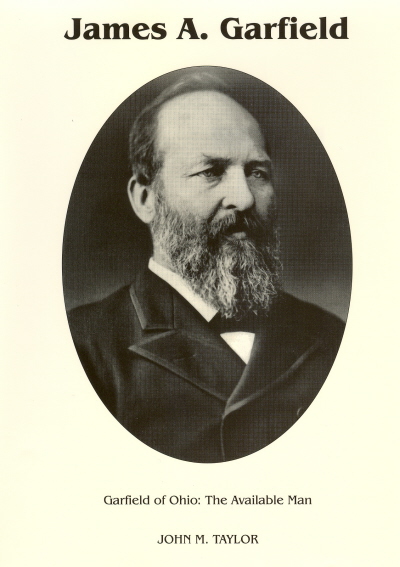GARFIELD OF OHIO: THE AVAILABLE MAN
by John M. Taylor
ISBN 978-0-945707-36-3 $35.00
336 pages including appendices, bibliography, notes, index plus illustrations
Although few American presidents enjoyed greater affection during their lifetime than James A. Garfield, it is probable that comparatively few Americans know much more about him today than that he was assassinated while in office. For those interested in learning more, both about the man and the stirring times in which he lived, this book offers a golden opportunity. One of its more interesting features is its account of Garfield's relations with a number of outstanding people probably better known to most Americans than Garfield himself. Among these are the poet William Cullen Bryant, lecturer Ralph Waldo Emerson, novelist Lew Wallace, educator Mark Hopkins, General William Rosecrans, Presidents Lincoln, Grant, and Hayes, and the foundress of the American Red Cross, Clara Barton.
The life-story of Garfield is in the Horatio Alger tradition; he was born in a log cabin; he was an ambitious and diligent worker; he attained wealth and high position. He acquired a rather good education despite many handicaps, including the death of his father when James was only two years old, and the lack of opportunity for formal education until he was seventeen. This he began at Keauga Academy (Chester, Ohio) which at the time "boasted a faculty of six, a student body of more than a hundred, and a library of 150 volumes."
In his twenties, Garfield spent two years at Williams College (New York) then under the presidency of Mark Hopkins, to whom "the great aim of education was to help the student perceive religious truth." The following entry in Garfield's diary testifies to the great influence of Hopkins upon him: "There is a mine opened in the College Chapel twice a day and the treasures are President Hopkins' mind and heart." Also, the Hopkins' "legend" owes much to Garfield's oft-quoted remark that "the ideal college is Mark Hopkins on one end of a log and a student on the other."
The Hopkins influence increased Garfield's already considerable interest in religion and in public speaking; and it was partly because of his skill on the platform that he was invited, in 1859, to run for the Ohio senate, and, four years later for the U.S. House of Representatives. After serving ably in both, he was elected in 1880 to succeed Rutherford B. Hayes as president; but before he had completed four months in office, he was fatally shot by a demented office-seeker, one Charles Guiteau. "...not even the death of Lincoln brought about a greater outpouring of grief than that of Garfield," says Taylor.
Taylor's biography presents Garfield as neither demigod nor machine politician, but as "a very human person with an unusual assortment of strengths and weaknesses." He is portrayed as honest, independent of judgment, greatly interested in education and in the general welfare, but also as inconsistent and sometimes lacking in decisiveness.
The book is based on a wealth of primary source materials and contains over 300 references. One appendix is an article, "A Century of Congress," written by Garfield for the Atlantic magazine in 1877; the other is Garfield's Inaugural Address. Distilled from the review by Brother Berchmans Downey, S.C., Best Sellers, October 1, 1970.



